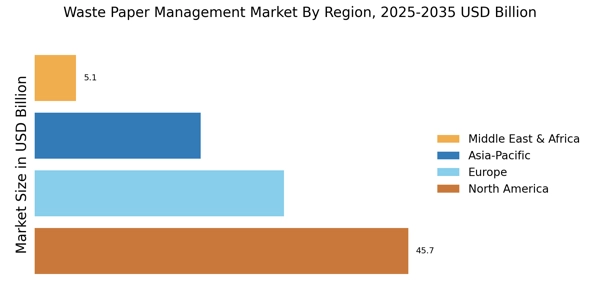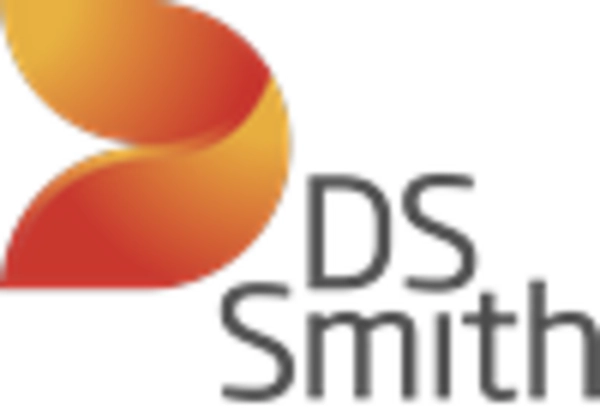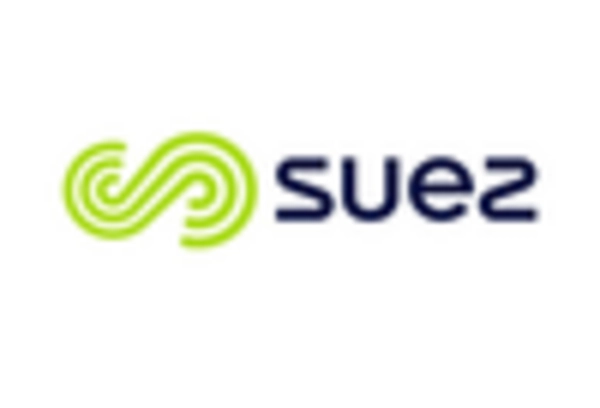Increasing Regulatory Pressures
Regulatory frameworks are becoming increasingly stringent, compelling businesses to adopt more sustainable practices within the Waste Paper Management Market. Governments are implementing policies that mandate recycling and waste reduction, which drives demand for effective waste paper management solutions. For instance, some regions have set ambitious recycling targets, aiming for 70% recycling rates by 2030. This regulatory environment creates opportunities for companies that specialize in waste paper management, as they are positioned to help businesses comply with these regulations. Additionally, non-compliance can lead to significant fines, further incentivizing organizations to invest in waste paper management solutions. As a result, the Waste Paper Management Market is likely to see growth driven by the need for compliance and sustainable practices.
Economic Incentives for Recycling
Economic incentives play a crucial role in shaping the Waste Paper Management Market. Many governments and local authorities are offering financial incentives to encourage recycling and waste reduction initiatives. These incentives can take the form of tax breaks, grants, or subsidies for companies that implement effective waste paper management practices. Such financial support not only reduces the cost burden on businesses but also promotes investment in recycling technologies and infrastructure. As a result, the Waste Paper Management Market is likely to experience growth as more companies take advantage of these economic incentives. This trend suggests a collaborative effort between the public and private sectors to enhance recycling rates and promote sustainable waste management practices.
Corporate Sustainability Initiatives
Corporate sustainability initiatives are increasingly becoming a focal point for businesses, significantly impacting the Waste Paper Management Market. Companies are recognizing the importance of integrating sustainability into their operations, which includes effective waste paper management. Many organizations are setting ambitious sustainability goals, such as achieving zero waste to landfill. This commitment not only enhances their brand image but also attracts environmentally conscious consumers. As a result, businesses are investing in waste paper management solutions to meet these sustainability targets. Recent data suggests that companies with robust sustainability programs can see a 20% increase in customer loyalty. Therefore, the Waste Paper Management Market is likely to benefit from this growing trend as more corporations prioritize sustainable practices.
Rising Consumer Demand for Sustainable Products
There is a notable increase in consumer demand for sustainable products, which is significantly influencing the Waste Paper Management Market. As consumers become more environmentally conscious, they are actively seeking products made from recycled materials. This shift in consumer behavior is prompting manufacturers to source recycled paper, thereby increasing the demand for effective waste paper management solutions. Recent surveys indicate that over 60% of consumers prefer brands that demonstrate a commitment to sustainability. Consequently, businesses are investing in waste paper management to meet this demand, which is likely to drive growth in the industry. The Waste Paper Management Market is thus positioned to benefit from this trend, as companies strive to align their practices with consumer expectations.
Technological Innovations in Waste Paper Management
The Waste Paper Management Market is experiencing a surge in technological innovations that enhance recycling processes. Advanced sorting technologies, such as AI-driven systems, are being implemented to improve the efficiency of waste paper collection and processing. These innovations not only streamline operations but also increase the quality of recycled paper products. According to recent data, the adoption of such technologies could potentially reduce operational costs by up to 30%. Furthermore, the integration of digital platforms for tracking waste paper flows is becoming more prevalent, allowing for better management and optimization of resources. This trend indicates a shift towards more sustainable practices within the Waste Paper Management Market, as companies seek to minimize waste and maximize recycling rates.


















Leave a Comment